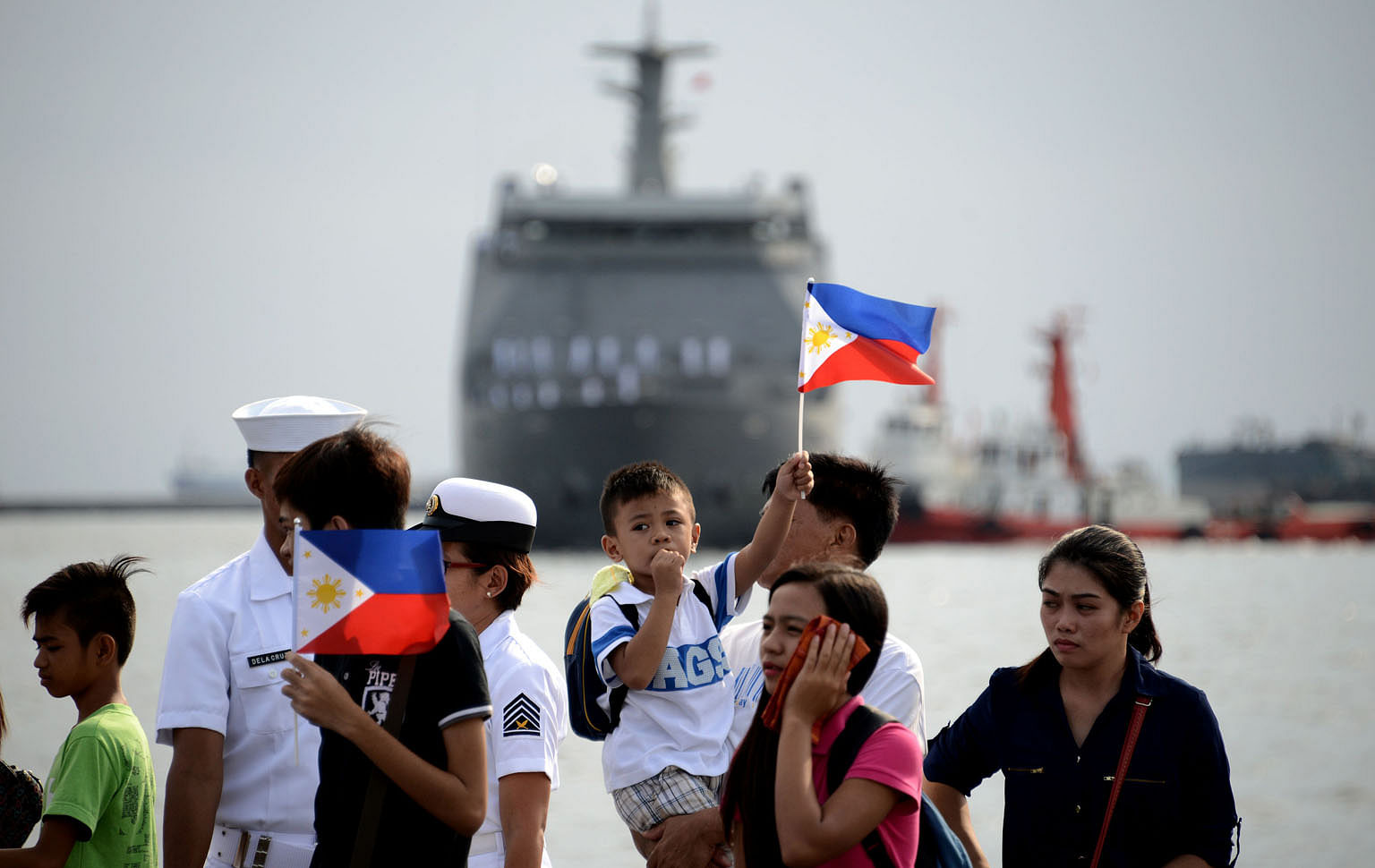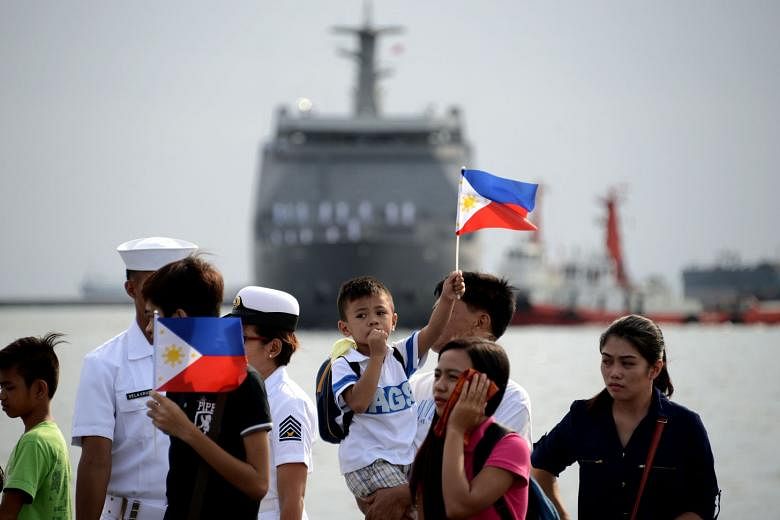On July 12, The Hague-based Permanent Court of Arbitration (PCA) will finally issue a much-anticipated verdict on the Philippines' South China Sea case against China. Once the verdict is issued, the world will be looking to see how various actors react, including Asean, of which Manila is a member.
In this context, eyes will be on whether Asean as a bloc chooses and is able to adopt a separate joint statement in response to the PCA ruling.
This would be in addition to the range of other expected responses by the grouping and its members, be it including the general language in a few paragraphs of its joint communique at the upcoming Asean Ministerial Meeting (AMM) in late July or leaving individual countries to issue their own statements as they see fit.
Though each of these other responses has its merits as well, there is a strong case to be made for Asean to issue a separate joint statement as a regional grouping in response to the PCA ruling.
Before stating the case for a separate statement, it is important to clarify what is meant and not meant by it. Contrary to what some might suggest, by calling for a separate statement following the PCA verdict, no one with any knowledge of Asean reasonably expects the regional grouping to side with a particular country or even back the outcome of the case in that statement. Rather, the focus of that statement should ideally be on how Asean welcomes any attempt by anyone (including the Philippines) to pursue the peaceful, lawful resolution of disputes and reiterates the need for everyone (including China) to respect legal and diplomatic processes without resorting to force.
Issuing such a statement is clearly in the interest of the regional grouping. First and most obviously, even though only four Asean states are claimants in the South China Sea disputes, all 10 of them have an interest in seeing these disputes resolved peacefully and lawfully rather than through the use of force, and ensuring that basic principles like the freedom of navigation and overflight are protected. The South China Sea is the lifeblood of the region, with more than US$5 trillion (S$6.8 trillion) worth of international shipping trade passing through it annually.

More broadly, the rules-based regional and international order, which includes the PCA, is the only thing that protects the rights and privileges of all states large and small - from China to Laos - and provides the peaceful, stable foundation for economic growth to occur. Indeed, the notion that certain states may conclude that their strong economic ties with China prevent them from supporting such a statement is rather ironic, since they would be failing to defend the very principles that allow their economic growth and the choices therein to occur in the first place.
Second, Asean as a grouping has an interest in demonstrating its unity in the face of this rather divisive issue. The past few years have witnessed Asean's growing maturity, acknowledged by its rising role in the shaping of the regional architecture as well as the intensifying involvement of major powers in the sub-region. But these trends have also made the liabilities of Asean's institutional features more visible and threatened the grouping's much prized centrality, presenting what former Asean secretary-general Surin Pitsuwan has called an "existential challenge".
Nowhere is this more evident than on the South China Sea issue, where pressure by external powers has exacerbated Asean divisions and led to statements not being issued, be it in Phnom Penh, Cambodia, in 2012 or more recently at the foreign ministers' meeting in Yuxi, China, last month.
The adoption of a joint statement would be a powerful demonstration of Asean's ability to confront the South China Sea issue during this moment of international scrutiny. It would send a clear message that Asean is able to tackle even the most vexing regional and global challenges and further cement its position as the fulcrum of Asia's architecture.
This is especially the case given the triple challenges the grouping faces on that front this year: contending with the PCA ruling; managing Asean-China relations during the 25th anniversary of the dialogue partnership; and being led by this year's chair Laos, a landlocked country that has little interest in the South China Sea and a lot invested in its relationship with Beijing.
While issuing a separate statement on the upcoming PCA decision would be a significant move in line with Asean's interests, it would also be far from unprecedented. In fact, one of the strongest arguments in favour of such a statement is that there is precedent both for the issuance of such statements in general as well as the specific language that might be used in this particular case.
On the former, Asean has already been issuing statements on matters of regional and global importance over the years apart from its usual joint communiques.
Following North Korea's missile testing on Jan 6, Asean foreign ministers issued a short two-paragraph statement on Jan 8 reiterating the importance of peace and security on the Korean peninsula as well as their support for denuclearisation.
On the South China Sea, in May 2014, Asean foreign ministers issued a brief statement expressing "serious concerns" over ongoing developments in the South China Sea. This was done under the chairmanship of Myanmar, a country that, like Laos, has little interest in the issue as well.
With respect to the specific language that might be in such a separate statement, Asean has already been adopting statements that contain the kind of wording that might comprise it. At the US-Asean Sunnylands Summit back in February, the joint statement agreed by all 10 Asean states did not just refer to general principles related to the South China Sea but the importance of "full respect for legal and diplomatic processes without resorting to the threat or use of force", a clear reference to the need for both China and the Philippines to abide by the PCA verdict. The Asean media statement that was initially agreed on by all 10 South-east Asian countries last month also contained similar language.
Even though it is clear that adopting a separate statement would be in Asean's interests and would be far from unprecedented, the regional grouping may well choose not to adopt a separate statement for any number of reasons. If so, it should at least ensure that the language in its next expected joint communique - after the 49th Asean Foreign Ministers' Meeting in Vientiane in late July - does not walk back on what Asean has been referencing in its statements so far this year. Beyond the content of these statements, preparations also need to be made by South-east Asian states to ensure that consensus does not break down at the last minute. Asean simply cannot afford another Phnom Penh under Laos' chairmanship.
- Prashanth Parameswaran is associate editor of The Diplomat magazine based in Washington, DC and a doctoral candidate at the Fletcher School of Law and Diplomacy at Tufts University researching on South-east Asia, Asian security issues and US foreign policy in the Asia-Pacific.
- S.E.A. View is a weekly column on South-east Asian affairs.

